YouTube Comment Spam: Navigating the Noise and Strategies to Combat It
Introduction
YouTube comment spam – YouTube has emerged as a premier platform for content creators to share their passions, connect with viewers, and build communities. However, as channels grow and audience engagement increases, so does the likelihood of encountering comment spam. This unwanted noise ranges from harmless but annoying repetitive messages to malicious links and phishing attempts, all of which can significantly disrupt the communication between creators and their genuine audience.
Comment spam not only clutters the video comments section but also poses potential risks to both creators and viewers. For creators, it can degrade the quality of interaction under their videos, deter meaningful conversations, and even impact the channel’s credibility and viewer retention. Moreover, excessive spam can trigger YouTube’s algorithms, leading to reduced visibility of their content in user feeds and search results, thereby indirectly affecting viewership and revenue.
Addressing this issue is crucial for maintaining a healthy digital environment where creators can thrive and audiences can engage safely and positively. In the following sections, we will explore various tools and strategies that YouTube and third-party developers offer to manage this pervasive problem, ensuring your channel remains a welcoming place for your community.
Understanding Comment Spam
YouTube comment spam can take several forms, each disrupting the viewer experience and engagement in its own way. Here are the most common types of spam that creators encounter:
Irrelevant Links: Often, comments contain links that have nothing to do with the video content. These are typically promotional in nature, leading to external sites selling products or services, or worse, to malicious websites that can harm the user’s device.
Repetitive Posts: Some spam involves posting the same message repeatedly across multiple videos or multiple times on the same video. This can be automated or manual, aimed at increasing visibility for certain agendas or simply to annoy viewers.
Phishing Attempts: More dangerous are the comments that attempt to trick viewers into divulging personal information like passwords or financial details. These often mimic legitimate links or messages supposedly from YouTube or other trusted entities.
Misleading Information: Comments may also spread false information or fake news, which can mislead viewers and contribute to the dissemination of inaccuracies.
Offensive or Inappropriate Content: Spam can also include comments that are offensive, contain hate speech, or are inappropriate, affecting the inclusivity and safety of the community.
Impact on Viewer Engagement and Community Health
The presence of youtube comment spam can significantly affect the health of a YouTube community and the engagement metrics of a channel:
Deterioration of Discussion Quality: Spam dilutes the quality of discussion in the comment section, making it difficult for genuine viewers to have meaningful interactions and for creators to respond to their audience’s feedback.
Viewer Distrust and Discomfort: Regular exposure to spam, especially of a malicious or offensive nature, can lead to distrust and discomfort among viewers. This may discourage them from interacting in the comment section or returning to the channel.
Algorithmic Penalties: YouTube’s algorithms prioritize user engagement as a factor for promoting content. Spam comments can skew engagement metrics, potentially leading YouTube to misinterpret the relevance and quality of the content, affecting its visibility and reach.
Time and Resource Drain: For creators, managing spam can become a time-consuming task that diverts resources away from content creation and community building.
Understanding these aspects of comment spam is crucial for YouTube creators as they prepare to implement strategies to combat this pervasive issue, thereby protecting their channel’s integrity and promoting a healthier interaction environment.
YouTube’s Spam Filters
 YouTube provides several built-in tools and settings designed to help creators detect and filter out spam comments automatically. These features are essential for maintaining the integrity of your channel’s comments section and ensuring a positive viewer experience.
YouTube provides several built-in tools and settings designed to help creators detect and filter out spam comments automatically. These features are essential for maintaining the integrity of your channel’s comments section and ensuring a positive viewer experience.
Overview of Built-in Tools and Settings
Automated Filters: YouTube’s automated systems continuously scan comments for potential spam, using algorithms that identify common spam characteristics like repetitive text, suspicious links, and inappropriate content.
Held for Review: Comments that the automated systems flag as potentially inappropriate or spammy are held for review. Creators can manually approve or delete these comments to prevent harmful content from appearing publicly.
Blocked Words: Creators can define a list of words and phrases that they consider inappropriate or irrelevant. Comments containing these words are automatically held for review or hidden.
Block Links: This setting prevents any comments with URLs from being posted, effectively reducing spam that includes links to external sites.
Step-by-Step Guide on How to Activate and Configure These Settings for Optimal Protection
Access YouTube Studio: Log into your YouTube account and navigate to YouTube Studio. This is the backend where all channel management tools are located.
Go to Settings: In the left-hand menu of YouTube Studio, click on “Settings.” This will open a new window with various options for your channel.
Select Community: In the settings menu, click on “Community.” Here you’ll find options specifically geared towards managing interactions on your channel.
Set Up Automated Filters:
- Held for Review: Under the “Defaults” tab, you can adjust settings for comments on your channel. Choose to hold potentially inappropriate comments for review. You can apply this setting to all your videos or select it for new uploads only.
Configure Blocked Words:
- Navigate to the “Blocked Words” tab. Here, you can enter words and phrases that you want to block. Separate each word or phrase with a comma. Comments containing these words will automatically be held for review or hidden, based on your preference.
Block Links:
- Still under the “Community” settings, check the box next to “Block links.” This will automatically hold comments with URLs for review, preventing the posting of unwanted or harmful links.
Save Changes: After configuring your settings, make sure to click “Save” to apply them. It’s a good practice to regularly update these settings based on the evolving nature of spam and the specific needs of your channel.
By setting up and actively managing these spam filters, you can significantly reduce the amount of spam in your comment section, allowing your community to engage more meaningfully and safely. Regularly reviewing these settings will ensure they remain effective and relevant to the types of interactions your channel attracts.
Manual Moderation Techniques
Even with automated tools, manual moderation remains a critical component of managing a YouTube channel’s comments section effectively. This hands-on approach helps ensure that nuanced or context-specific spam does not slip through the cracks. Here’s how creators can efficiently handle manual moderation and engage their community in maintaining a clean comment environment.
Tips for Manually Monitoring and Moderating Comments
Regular Review Sessions: Allocate specific times to review comments on your videos. This consistency helps manage the workload and ensures timely responses to your community.
Use the ‘Held for Review’ Folder: Regularly check the comments that have been automatically held for review. This section can contain false positives that need releasing or spam that requires deletion.
Prioritize High-Traffic Videos: Focus your manual moderation efforts on newer or more popular videos, which are likely to attract more comments and potential spam.
Engage with Your Audience: Actively participating in the comments section can deter spammers and encourage positive interactions. Viewer engagement often increases in spaces where the creator is visibly active.
Leverage Moderator Roles: If the workload becomes too much for one person, consider assigning moderator roles to trusted individuals. These could be fans or collaborators who understand the channel’s ethos and can help manage the comments more effectively.
Importance of Community Involvement in Reporting Spam
Engaging your community in the fight against spam not only helps maintain a clean commenting environment but also fosters a sense of collective responsibility. Here’s how you can encourage community involvement:
Educate Your Viewers: Make a video or mention in your videos how viewers can help keep the community clean by reporting spam. Explain what constitutes spam and how it can be harmful.
Encourage Proactive Reporting: Remind your audience that they can report suspicious comments by clicking the three dots next to a comment and selecting “Report spam or abuse.” This helps YouTube’s automated systems learn and improve.
Acknowledge Community Efforts: When viewers are active in maintaining a clean comment space, acknowledge their efforts. This can be done through shout-outs in videos or thank-you notes in the comments, encouraging continued vigilance.
Create Community Guidelines: Post clear community guidelines in your channel’s about section or as a pinned comment in your videos. This informs new and existing subscribers about the expected behavior and how to deal with spam.
By combining manual moderation with community involvement, creators can significantly enhance the effectiveness of their spam management strategies. This dual approach not only maintains the quality of the discussion but also strengthens the relationship between the creator and their audience, creating a safer and more engaging platform for everyone.
Using Third-Party Tools
While YouTube’s built-in tools provide a foundational layer of spam protection, third-party tools and plugins can offer enhanced features and more granular control over comment management. These tools are particularly valuable for larger channels or those looking to streamline their moderation process with more sophisticated capabilities.
Introduction to Popular Third-Party Tools and Plugins
TubeBuddy: This browser extension offers a range of YouTube management features, including advanced comment filtering options that go beyond YouTube’s default settings. It allows you to create custom word lists and even filters comments based on sentiment.
VidIQ: Another comprehensive tool that aids in overall channel management, VidIQ also includes features for comment moderation. Its Smart Moderation tool helps flag and filter comments that contain specific phrases, spam, or inappropriate content, making it easier to maintain a clean comment section.
Social Blade: Known for its analytics capabilities, Social Blade also offers tools that can help track comment patterns and flag potential spam through its reporting features, aiding creators in understanding and managing their audience interactions better.
Comparison of Features and Recommendations Based on Channel Size and Engagement Levels
Small to Medium Channels: For channels that are still growing and have a manageable level of engagement, TubeBuddy can be a perfect fit. Its user-friendly interface and cost-effective plans make it accessible for creators who are just starting to experience issues with spam.
Medium to Large Channels: VidIQ is ideal for channels with a higher level of engagement and those who need more robust tools for comment management. Its ability to integrate analytics and moderation helps creators not only manage spam but also understand viewer sentiment and engagement trends.
Large Channels or Networks: For very large channels or creators managing multiple channels, a combination of tools might be necessary. Utilizing both VidIQ for its deep analytic and moderation capabilities and Social Blade for tracking engagement and patterns can provide comprehensive coverage.
Choosing the Right Tool
When selecting a third-party tool for managing YouTube comment spam, consider the following:
Feature Set: Ensure the tool provides the specific features you need, such as sentiment analysis, custom filters, or bulk comment management.
Ease of Use: The tool should integrate seamlessly with your workflow and not require excessive setup or maintenance.
Cost: Evaluate the cost against your budget and the potential return on investment in terms of saved time and improved channel performance.
Security and Compliance: Choose tools that comply with YouTube’s API usage terms and respect viewer privacy.
By leveraging these third-party tools, YouTube creators can significantly enhance their efficiency in managing comment sections, allowing them to focus more on content creation and community building rather than spending excessive time on moderation tasks.
Legal and Ethical Considerations
 Managing spam in YouTube comments isn’t just a matter of maintaining community health; it also involves navigating complex legal and ethical waters. Understanding these aspects is crucial for creators who need to balance effective moderation with respect for free speech and privacy.
Managing spam in YouTube comments isn’t just a matter of maintaining community health; it also involves navigating complex legal and ethical waters. Understanding these aspects is crucial for creators who need to balance effective moderation with respect for free speech and privacy.
Legal Implications of Spam Comments
Liability for Harmful Content: Creators might worry about legal responsibility for spam comments posted on their videos, especially if those comments are defamatory, infringe copyrights, or include illegal links. Generally, under laws like the United States’ Section 230 of the Communications Decency Act, content creators are not held liable for third-party content on their platforms. However, this can vary by country and specific legal jurisdiction.
Data Privacy Concerns: When using third-party tools for comment moderation, creators must be aware of data privacy issues. Ensuring that these tools comply with global data protection regulations, such as GDPR in Europe, is essential to protect the privacy of viewers who comment on videos.
Copyright and Trademark Issues: Spam comments often include unauthorized promotions and could use copyrighted material without permission. Creators should have processes in place to quickly address these issues to avoid legal complications.
Ethical Considerations in the Balance Between Moderation and Censorship
Balancing the need for a clean, engaging community and respecting freedom of expression is a delicate task:
Transparency in Moderation Practices: It’s important for creators to be transparent about their moderation policies. Clearly communicating what constitutes spam and the reasons certain comments may be deleted helps maintain trust with the audience.
Fairness in Enforcement: Consistency in how moderation rules are applied is crucial to avoid perceptions of bias or censorship. This includes treating all comments equally regardless of the commenter’s views, as long as they adhere to the community guidelines.
Allowing Dissent: While it’s necessary to remove spam, creators should be careful not to over-moderate by deleting comments simply because they express dissenting opinions. Preserving a space for healthy debate is key to maintaining a vibrant community.
Avoiding Overuse of Automation: Reliance on automated tools should be balanced with human judgment, especially in nuanced situations. Tools may flag non-spam comments as spam due to keyword triggers, so manual oversight is essential to ensure fair moderation.
Respecting User Privacy: When deleting comments or banning users, it’s important to respect their privacy and avoid public shaming or calling out individuals unless necessary for legal reasons.
By considering these legal and ethical issues, YouTube creators can create a safer and more respectful environment that upholds the integrity of their channel and fosters a positive community spirit. Balancing effective spam control with respect for user rights will not only enhance viewer satisfaction but also protect creators from potential legal challenges.
Preventive Measures and Best Practices
Effective management of YouTube comment spam not only involves reactive measures but also proactive strategies that prevent spam from appearing in the first place. By setting up smart comment settings and adhering to best practices, creators can significantly reduce the influx of unwanted comments and maintain a healthier, more engaging community.
Strategies to Prevent Spam Through Smart Comment Settings
Restricting Who Can Comment: Creators can limit commenting privileges to certain groups, such as subscribers who have been subscribed for a specific amount of time. This reduces spam by ensuring that only viewers who are genuinely interested in the channel can participate in the discussion.
Blocking Specific Words: Using YouTube’s built-in tools to block comments containing specific words or phrases can be extremely effective. Creators should consider adding not just obvious spam triggers but also subtler phrases often used in spammy contexts.
Approving Comments Manually: For smaller channels or specific high-stakes videos, setting comments to require approval before posting can help maintain control over the discussion and prevent spam from ever being visible to the public.
Disabling Comments on Older Videos: Spammers often target older videos hoping that the creator will not notice. Disabling comments on older content can prevent this type of spam without affecting engagement on newer videos.
Best Practices for Maintaining a Spam-Free Environment
Regular Audits of Comment Settings: Creators should periodically review their comment settings to ensure they are still effective. As the channel grows and the nature of engagement changes, adjustments might be needed to adapt to new spam tactics.
Update the Blocked Words List: Continuously update the list of blocked words as new spam trends emerge. Engaging with other creators can also provide insights into common spam tactics and effective countermeasures.
Use Analytics to Identify Spam Sources: Analyzing where spam comments are most frequent can help creators fine-tune their settings and focus moderation efforts more effectively.
Educate Your Community: Regularly remind viewers of the importance of maintaining a respectful and clean commenting environment. Educating them about the harms of spam and how to report it can turn viewers into active participants in keeping the community clean.
Stay Informed About New Tools and Features: YouTube and third-party developers continuously update and improve their tools. Staying informed about these updates ensures that creators are always using the best available resources to combat spam.
Collaborate with Other Creators: Networking with other YouTube creators can provide valuable insights into effective spam prevention strategies. Sharing experiences and tips can help everyone improve their moderation techniques.
By implementing these preventive measures and best practices, YouTube creators can effectively minimize the presence of spam in their comment sections. This not only improves the overall viewer experience but also enhances the credibility and attractiveness of the channel, encouraging more meaningful and engaging interactions among the community.
Conclusion
Effectively managing comment spam is crucial for maintaining the integrity and health of your YouTube channel. Spam can significantly hinder the quality of interaction between you and your audience, potentially damaging viewer engagement and your channel’s reputation. By implementing the strategies outlined in this article, you can shield your community from the disruptive effects of spam and foster an environment where meaningful conversations flourish.
Starting with YouTube’s built-in tools for spam detection and filtering provides a solid foundation for any spam management strategy. Complementing these with manual moderation techniques ensures that more subtle or complex spam attempts don’t slip through. Additionally, integrating third-party tools can offer advanced capabilities and efficiencies, particularly beneficial for larger channels or those experiencing significant amounts of spam.
However, the fight against spam doesn’t end with just setting up tools and processes. It requires ongoing vigilance, regular updates to your moderation strategies, and active participation in community education to sustain a clean commenting environment. Engaging your viewers in this process not only helps in managing spam more effectively but also builds a stronger, more connected community.
We encourage all YouTube creators, regardless of the size of their channel, to take these recommendations seriously. Implement the discussed strategies, stay informed about new tools and updates, and continuously adapt your approaches to the evolving nature of spam. By doing so, you can ensure that your channel remains a welcoming and safe space for genuine interaction, contributing to the overall success and growth of your creative endeavors on YouTube.

